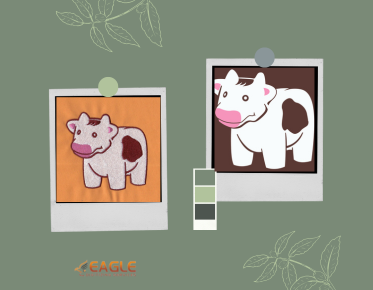Using Color Combinations in Embroidery Digitizing
Embroidery digitizing is an art form that transforms digital images into stitch files that embroidery machines can read. One of the most critical aspects of this process is the use of color combinations. The right colors can bring a design to life, making it vibrant and eye-catching. For instance, embroidery digitizing involves selecting colors that complement each other and enhance the overall design【4:0†source】.
The Importance of Color in Embroidery Digitizing
Color plays a vital role in embroidery digitizing. It can affect the mood, perception, and even the message conveyed by the design. When choosing colors, digitizers must consider the fabric color, the design's purpose, and the intended audience. For example, a corporate logo might require a more subdued color palette, while a children's design could benefit from bright, playful colors.
Understanding Color Theory
Color theory is essential for anyone involved in embroidery digitizing. It involves understanding how colors interact, the emotions they evoke, and how they can be combined to create harmonious designs. Primary colors, secondary colors, and tertiary colors all play a part in creating a balanced design. Additionally, understanding the color wheel and concepts like complementary and analogous colors can help digitizers make informed decisions.
Choosing the Right Color Combinations
When selecting color combinations for embroidery digitizing, it's crucial to consider the design's context. For instance, a design intended for a sports team might use the team's colors, while a design for a wedding might use softer, more romantic hues. The key is to ensure that the colors chosen enhance the design rather than detract from it.
Tools and Techniques for Color Selection
There are several tools and techniques that digitizers can use to select the right colors. Software programs often include color palettes and tools that allow users to experiment with different combinations. Additionally, many digitizers rely on their experience and intuition to choose colors that will work well together. Some may even use physical color swatches to get a better sense of how the colors will look in the final product.
Common Challenges in Color Selection
One of the biggest challenges in color selection is ensuring that the colors chosen will look good on the final product. This can be difficult because colors can appear differently on a computer screen than they do on fabric. To overcome this challenge, digitizers often create test swatches to see how the colors will look when stitched out. This allows them to make any necessary adjustments before the final design is produced.
Trends in Embroidery Color Combinations
Like any art form, embroidery digitizing is subject to trends. Currently, there is a trend towards using bold, vibrant colors in embroidery designs. This trend is partly driven by advances in embroidery technology, which allow for more complex and colorful designs. Additionally, there is a growing interest in using non-traditional color combinations to create unique and eye-catching designs.
Conclusion: The Future of Color in Embroidery Digitizing
As technology continues to advance, the possibilities for color in embroidery digitizing are expanding. New software tools and techniques are making it easier than ever to experiment with color and create stunning designs. In the future, we can expect to see even more innovative uses of color in embroidery digitizing. Eagle Digitizing excels in providing professional embroidery digitizing services, ensuring every design is crafted with unmatched precision.



